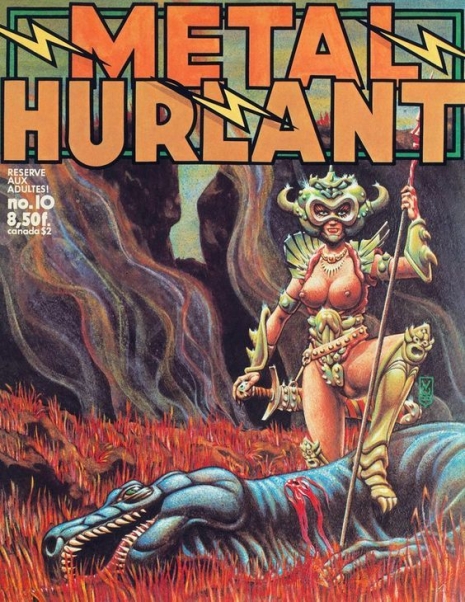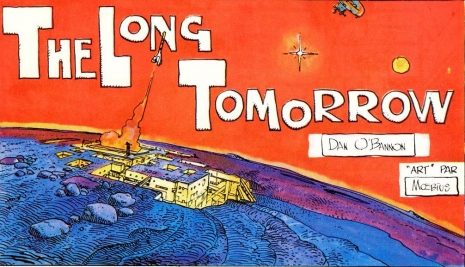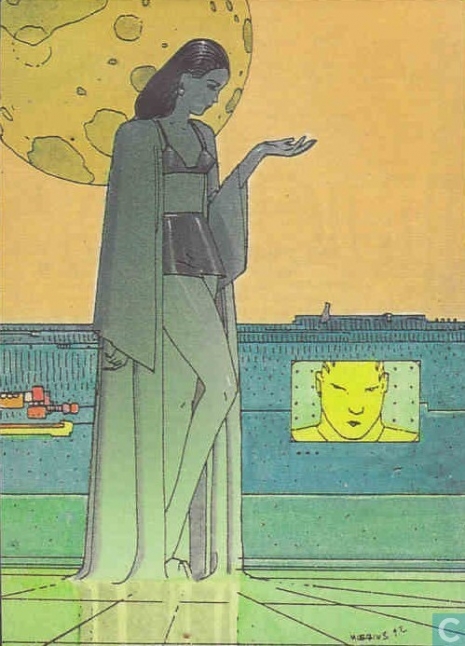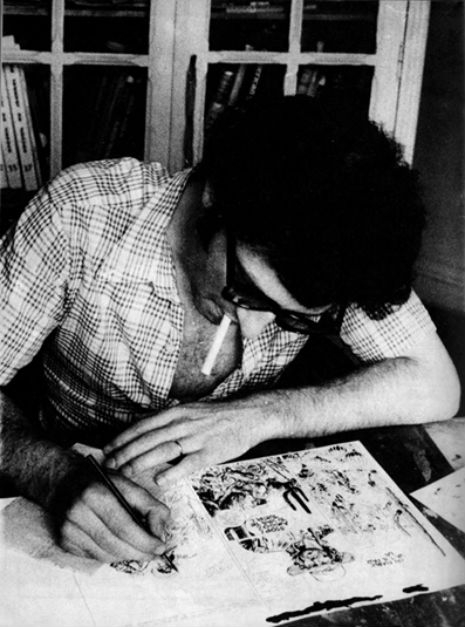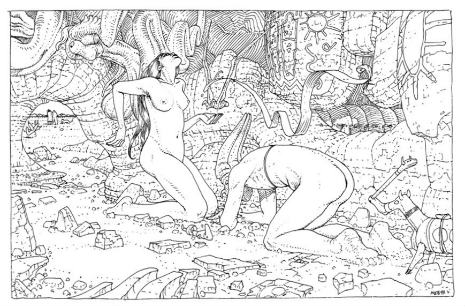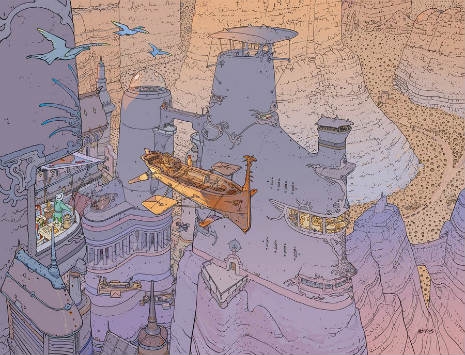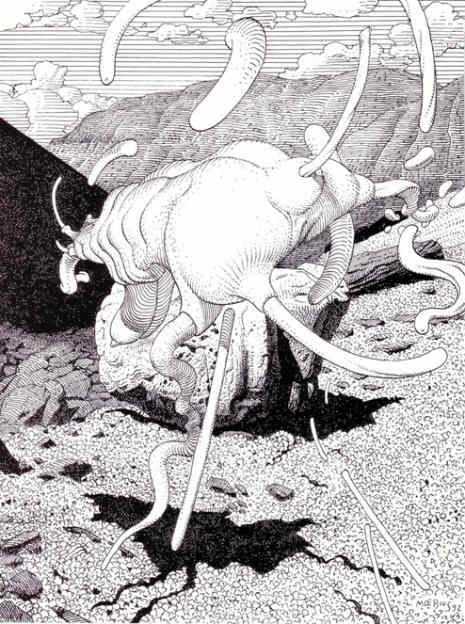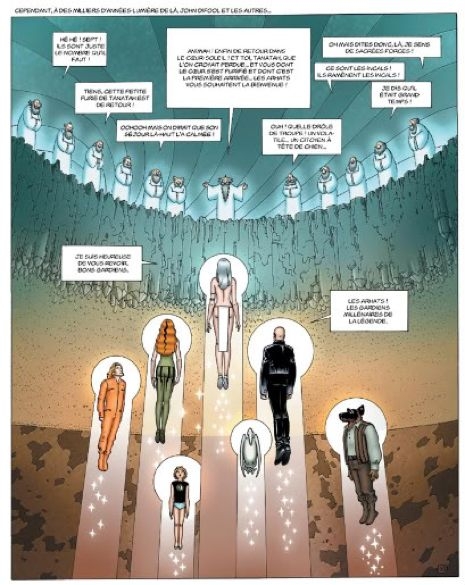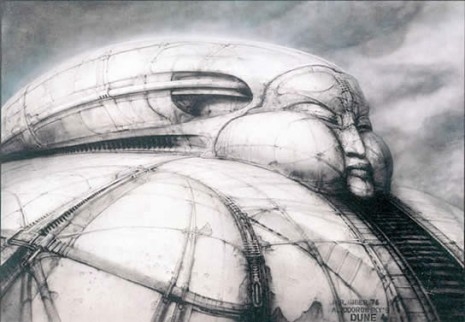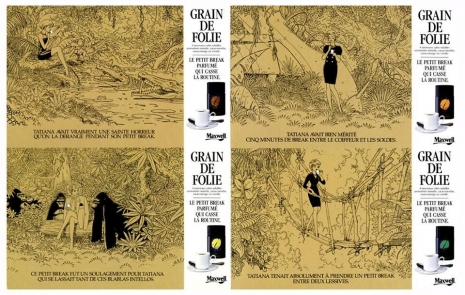
In 1989 Jean Giraud, or Moebius as he is universally known in the comix world, accepted an assignment from the Paris office of Young & Rubicam. The client was Maxwell House coffee, and the job called for a series of advertisements that would appear in French magazines. The images correlated roughly to what we would today call “a New Yorker cartoon” but they also overflowed with the exacting, unmistakable, visionary touch of Moebius, collaborator of Alejandro Jodorowsky, Ridley Scott, James Cameron, and Luc Besson.
Moebius completed six images for Young & Rubicam but only four were actually used in magazines. The theme of the advertisements was “Grain de Folie,” which translates to something like “a touch of madness.” The purpose of the campaign appears to have been to convince French womankind that a coffee during the daytime might be seen as a proper activity or even a reward for completed tasks, as we shall see.
The heroine of the series was “Tatiana,” a self-possessed and fashionable young woman who happens to find herself alone on a deserted jungle island or the like. Rather than display a shred of panic, unflappable Tatiana instead demurely sips her cup of Maxwell House coffee, a cup that invariably is defined as a tiny expanse of white in an otherwise completely yellow image. Tatiana is so utterly capable that even the considerable threats of the jungle are reduced (in the caption, we find) to the everyday trials of suburban domesticity. Or something.
Here are two rather grainy images of the ads more or less in action. Note that you can see a small amount of white space to indicate where the center of the image would be, in the two-page spread of a magazine. (Better images—and translations—are supplied further down, never fear.)

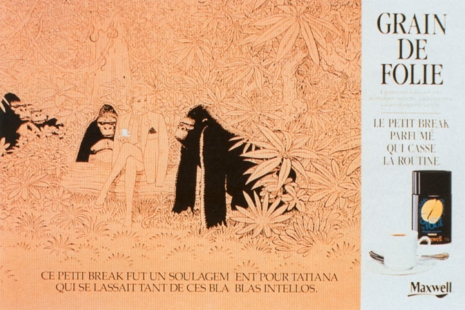
Moebius fans have been aware of these images for quite a while. In 1991, just two years after the campaign, French artist Numa Sadoul included them in a book called Mœbius: Entretiens avec Numa Sadoul. A few years later they were printed in a limited run as Coffee Dreams, the 5th issue of Ashcan Comics, a series dedicated to Moebius rarities.
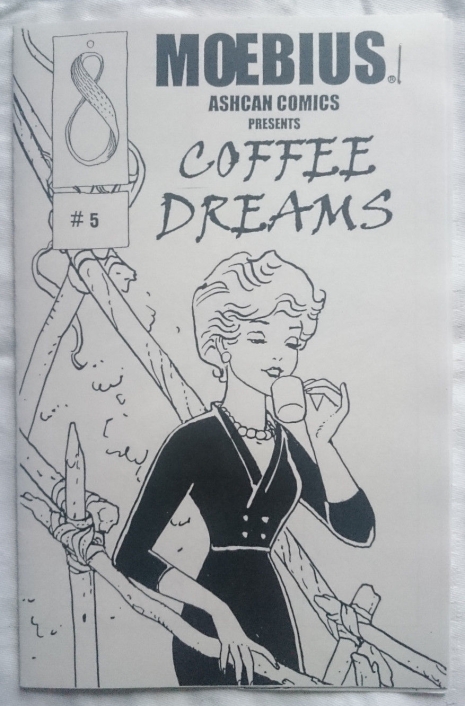
That issue, which was limited to just 100 copies, fetches $500 in online auction sites today—which is true of all of the Ashcan Comics that I was able to find.
Here are better-quality pics with proper captions so that you can enjoy the full effect of these indelible Moebius images:

Ce petit break fut un soulangement pour Tatiana qui se lassait tant de ces blablas intellos. (The little break was a relief for Tatiana, who was sick and tired of all the intellectual blah-blah.)
More Moebius after the jump…








